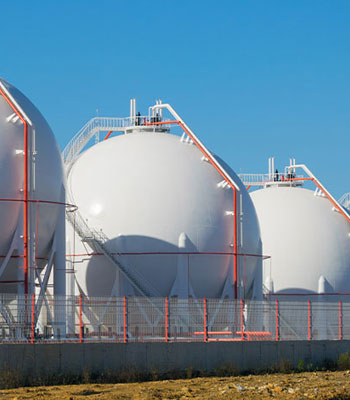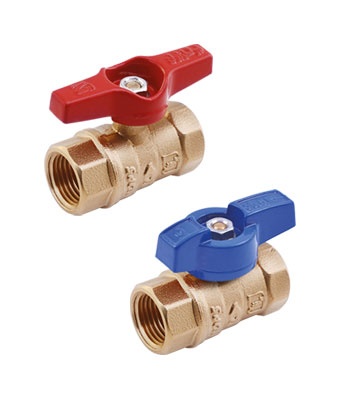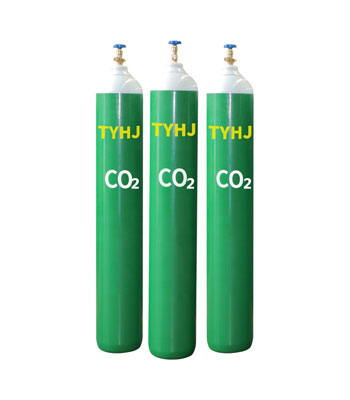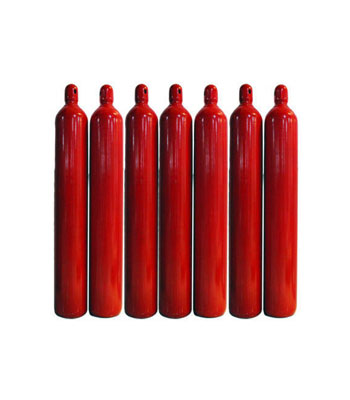Butane Specification
$0.00The product butane specifications are as follows:
| Capacity | 0.38 MTPA |
| Composition | |
|---|---|
| Butane Content | 95 liquid volume % (min.) |
| Pentane and heavier | 1.0 mole % (max.) |
| Quality | |
| Vapor pressure at 100 ºF | 70 psig (max.) |
| Volatile residue temp. at 95% evaporation | 36 ˚F (max.) |
| Corrosion, copper strip | No. 1 |
| Impurities | |
| Total sulfur | 0.001 wt % (max.) |
| Hydrogen Sulfide | negative |
Butane Specification
$0.00The product butane specifications are as follows:
| Capacity | 0.38 MTPA |
| Composition | |
|---|---|
| Butane Content | 95 liquid volume % (min.) |
| Pentane and heavier | 1.0 mole % (max.) |
| Quality | |
| Vapor pressure at 100 ºF | 70 psig (max.) |
| Volatile residue temp. at 95% evaporation | 36 ˚F (max.) |
| Corrosion, copper strip | No. 1 |
| Impurities | |
| Total sulfur | 0.001 wt % (max.) |
| Hydrogen Sulfide | negative |
Butane Specification
$0.00The product butane specifications are as follows:
| Capacity | 0.38 MTPA |
| Composition | |
|---|---|
| Butane Content | 95 liquid volume % (min.) |
| Pentane and heavier | 1.0 mole % (max.) |
| Quality | |
| Vapor pressure at 100 ºF | 70 psig (max.) |
| Volatile residue temp. at 95% evaporation | 36 ˚F (max.) |
| Corrosion, copper strip | No. 1 |
| Impurities | |
| Total sulfur | 0.001 wt % (max.) |
| Hydrogen Sulfide | negative |
Butterfly handle Gas Ball Valve
$0.00| Model : | Butterfly handle Gas Ball Valve |
| Company name : | Iran Gas Valve |
| Packaging : | – |
| Minimum order : | 1 |
| Standard : | – |
| Production power : | – |
Butterfly handle Gas Ball Valve
$0.00| Model : | Butterfly handle Gas Ball Valve |
| Company name : | Iran Gas Valve |
| Packaging : | – |
| Minimum order : | 1 |
| Standard : | – |
| Production power : | – |
Butterfly handle Gas Ball Valve
$0.00| Model : | Butterfly handle Gas Ball Valve |
| Company name : | Iran Gas Valve |
| Packaging : | – |
| Minimum order : | 1 |
| Standard : | – |
| Production power : | – |
Carbon dioxide Gas
$0.00Carbon dioxide (CO2) is a nonflammable, colorless, odorless gas. It is found in air at concentration of about 0.03%. Carbon dioxide may exist simultaneously as a solid, liquid, and gas at a temperature of -56.6˚C and a pressure of 60.4 psig. At a temperature of -79˚C and atmospheric pressure, carbon dioxide solidifies forming “dry ice” at density of 97.4 pounds per cubic foot. Because of its low concentration in the atmosphere, air is not a suitable feedstock for carbon dioxide production. Rather, CO2 is obtained from by-product streams from various manufacturing processes. Bulk quantities of carbon dioxide are usually stored and shipped as liquid under elevated pressure and refrigeration.
Blanketing and purging of tanks and reactors. It is also used as shielding gas in the arc welding process. It is the source of the bubbles in soft drinks and other carbonated beverages. It is used to fill certain types of fire extinguishers that rely on its inert properties, densities, and low temperature when released from high-pressure storage.In addition to its “inert” properties, carbon dioxide, as dry ice, is used to freeze a variety of foods.
Carbon dioxide Gas
$0.00Carbon dioxide (CO2) is a nonflammable, colorless, odorless gas. It is found in air at concentration of about 0.03%. Carbon dioxide may exist simultaneously as a solid, liquid, and gas at a temperature of -56.6˚C and a pressure of 60.4 psig. At a temperature of -79˚C and atmospheric pressure, carbon dioxide solidifies forming “dry ice” at density of 97.4 pounds per cubic foot. Because of its low concentration in the atmosphere, air is not a suitable feedstock for carbon dioxide production. Rather, CO2 is obtained from by-product streams from various manufacturing processes. Bulk quantities of carbon dioxide are usually stored and shipped as liquid under elevated pressure and refrigeration.
Blanketing and purging of tanks and reactors. It is also used as shielding gas in the arc welding process. It is the source of the bubbles in soft drinks and other carbonated beverages. It is used to fill certain types of fire extinguishers that rely on its inert properties, densities, and low temperature when released from high-pressure storage.In addition to its “inert” properties, carbon dioxide, as dry ice, is used to freeze a variety of foods.
Carbon dioxide Gas
$0.00Carbon dioxide (CO2) is a nonflammable, colorless, odorless gas. It is found in air at concentration of about 0.03%. Carbon dioxide may exist simultaneously as a solid, liquid, and gas at a temperature of -56.6˚C and a pressure of 60.4 psig. At a temperature of -79˚C and atmospheric pressure, carbon dioxide solidifies forming “dry ice” at density of 97.4 pounds per cubic foot. Because of its low concentration in the atmosphere, air is not a suitable feedstock for carbon dioxide production. Rather, CO2 is obtained from by-product streams from various manufacturing processes. Bulk quantities of carbon dioxide are usually stored and shipped as liquid under elevated pressure and refrigeration.
Blanketing and purging of tanks and reactors. It is also used as shielding gas in the arc welding process. It is the source of the bubbles in soft drinks and other carbonated beverages. It is used to fill certain types of fire extinguishers that rely on its inert properties, densities, and low temperature when released from high-pressure storage.In addition to its “inert” properties, carbon dioxide, as dry ice, is used to freeze a variety of foods.
Carbon monoxide (CO) Gas
$0.00Carbon monoxide (CO) gas is formed from the combination of a carbon atom with an oxygen atom. Not only flammable, it is also very hazardous since it is very toxic and odorless. It cannot sustain life and is produced, among other things, from incomplete combustion due to lack of oxygen. It can therefore cause domestic accidents if heating systems are poorly maintained. It is produced on a large scale in industry, in combination with hydrogen, by reforming hydrocarbons, generally natural gas. It is used in large quantities to produce various intermediary organic chemicals, such as acetic acids, isocyanates, formic acid, and also certain polymers such as polycarbonates and polyketones.
Carbon monoxide (CO) Gas
$0.00Carbon monoxide (CO) gas is formed from the combination of a carbon atom with an oxygen atom. Not only flammable, it is also very hazardous since it is very toxic and odorless. It cannot sustain life and is produced, among other things, from incomplete combustion due to lack of oxygen. It can therefore cause domestic accidents if heating systems are poorly maintained. It is produced on a large scale in industry, in combination with hydrogen, by reforming hydrocarbons, generally natural gas. It is used in large quantities to produce various intermediary organic chemicals, such as acetic acids, isocyanates, formic acid, and also certain polymers such as polycarbonates and polyketones.
Carbon monoxide (CO) Gas
$0.00Carbon monoxide (CO) gas is formed from the combination of a carbon atom with an oxygen atom. Not only flammable, it is also very hazardous since it is very toxic and odorless. It cannot sustain life and is produced, among other things, from incomplete combustion due to lack of oxygen. It can therefore cause domestic accidents if heating systems are poorly maintained. It is produced on a large scale in industry, in combination with hydrogen, by reforming hydrocarbons, generally natural gas. It is used in large quantities to produce various intermediary organic chemicals, such as acetic acids, isocyanates, formic acid, and also certain polymers such as polycarbonates and polyketones.










